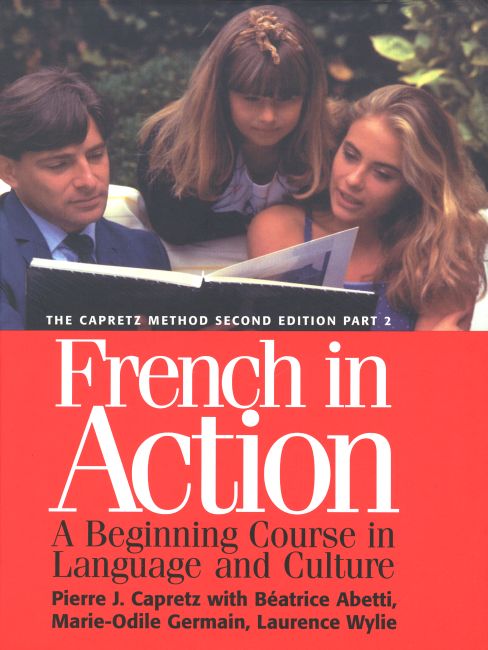Of all the resources for language learning that I have used
over the years, French in Action is probably the absolute most comprehensive resource I have ever found. With a 52 episode television series, a giant textbook, two workbooks, and hundreds of audio files, it almost leaves one wondering whether or not there is any need for an instructor. Saying that, this program is not necessarily ideal for all students and all classrooms. Let's take a look at the advantages and disadvantages of this course, to explore whether or not it is the ideal match for you.
It is important to note that the entire course is presented in French only – the students will be spoken to in French from day one, and will be expected to learn French through French. It may sound counter-intuitive or overly challenging to use such a method with students that have little or no prior exposure to French, but it does work. By starting from basic building blocks that students will be familiar with and contextual clues, the course will quickly have students understanding French in context.
The aforementioned 52 videos (or episodes) make up the meat of the course. That is to say, everything contained in the other materials revolves around what is being taught to students in the videos. The videos are primarily made up of two components: a French teacher (Mr. Capretz himself) directly addressing the audience, explaining things, and giving examples; the second has students follow the story of two young French speakers in their everyday lives. These two components are always connected, as the French teacher creates, narrates, and explains the story. All the actors in the story are native speakers of French, speaking with the standard European dialect. I found the acting to be surprisingly natural and well-delivered. There are plenty of clips from French movies, cartoons, and various other visuals used in the videos to give context and show examples of real French speech. The main textbook gives you basically the exact content of the story from the videos, only in a written format. There is a lengthy French-English glossary at the end of the book as well, which students will likely find useful if there is a word that they can't figure out through context. I really enjoyed the content of the videos/textbook, not only because they teach language effectively, but because the content of the lessons is interesting in itself. Some might find that the course has a sudden jump in difficulty about a third of the way through the course, but I think that with patience and persistence, students will be able to overcome this challenge.

For content more akin to what is found in your typical French materials for beginners, you can turn to the workbooks. Whereas the videos (and textbook, as a matter of course) are entirely composed in French and use a wide variety of language, not all of which is expected to be understood, the exercises in the workbook have instructions in English and focus on teaching fundamentals in order, little by little. There is a massive amount of content in the workbooks. So much, that it would take a lot of time if you wanted to cover all of the exercises for every lesson. Anyone using these materials should be aware of just how much is covered here so that realistic expectations can be set when establishing a timeline for working through the exercises. I love the exercises in the workbook, not only for their scope, but for the high quality and variety as well. There are several audio recordings to go with each lesson in the workbook, which ensures that students get just as much practice listening as they do reading.
"Students using French in Action will probably have a much more holistic understanding of the language after a year than their peers who opt for other language courses, but different students will have different priorities."
To be sure, I highly vouch for the effectiveness of this course. As I alluded to at the beginning of this review, however, this course isn't necessarily for everyone. First of all, these materials are probably not ideal for anyone below high school age. The course presents both content and themes that may be difficult for younger learners to understand and relate to. While I don't think it would be impossible to use the course effectively, it might be better to choose materials better suited for that age group. I also would not recommend the course to anyone who is in a hurry to learn French. Getting through this course is going to take a lot of time and energy. For someone who only wants to learn the basics, or wants to concentrate on verbal communication, this is probably not the best choice. While students who use this course will be able to do all of that stuff in the long run, the way things are presented will delay teaching some aspects of the language until much later than normal. Students using French in Action will probably have a much more holistic understanding of the language after a year than their peers who opt for other language courses, but different students will have different priorities.
To sum up, this is a great language course, but you're going to have to put in a lot of hours to get anything out of it. The program is probably best for university students or adult learners who are looking to dedicate a good amount of time to learning French, over the course of one or two years. For anyone that has the time and patience, I would recommend this French course over all others, but it all depends on each individual learner's circumstances. I highly suggest all French students and teachers to consider this course, keeping in mind that patience will be the key to success.




